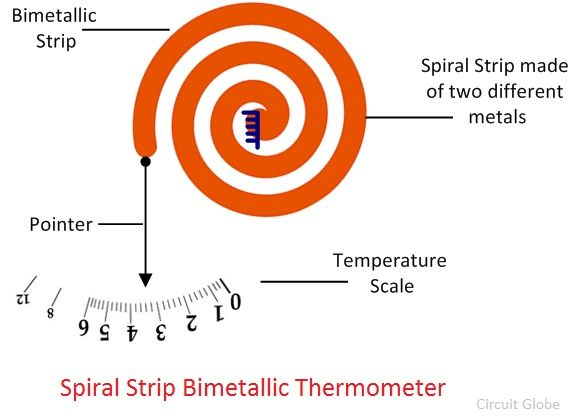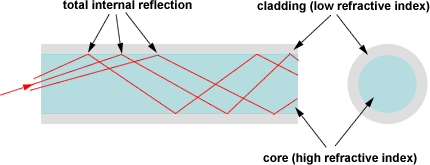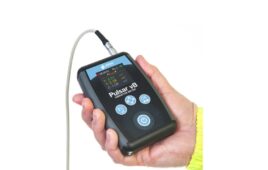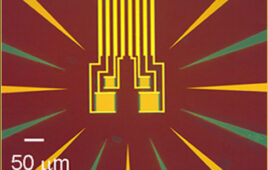Among the many ways to sense temperature, combinations of advanced optical principles used with optical fibers offer very different approaches, with application advantages and implementation limitations.
Temperature is the most widely sensed physical parameter; it’s that simple. What’s not simple is the many ways we have of measuring it through the use of sensors such as thermocouples, RTDs, diodes, thermal imaging, and the expansion of materials, to cite just a few techniques (it’s a very long list).
There’s also the common challenge in many situations of getting that temperature sensor to be “close enough” or properly situated to make the measurement, to make it accurately, to work reliably, and even survive the measurement environment, as there are often have issues of access, temperature extremes, vibration, or harsh atmosphere. Finally, the sensor must be observable and eventually report the changes via readout system, which is usually electronic. In short: temperature is widely measured, sometimes with ease and often with difficulty, especially as the temperature goes into extreme cold or hot regions.
The reality is that engineers of all types have a conflicting relationship with temperature. On one side, it’s a cause of change in component and structural parameters such as shifts causing physical changes and electrical errors, and even eventual failure in many cases. Among these effects are diode voltage-drop change; resistance change; crystal-frequency shift; fractures due to dimensional changes, thermal coefficients, and materials mismatch, and more. These changes are unavoidable as they are due to basic physics and often must be dealt with. Among the techniques for dealing with temperature coefficient-induced changes are the use of:
- carefully selected materials;
- component burn-in and aging;
- thermally controlled oven;
- data calibration and correction;
- ratiometric or balanced electrical topologies where changes cancel out, such as in the Wheatstone bridge, Figure 1;

- mechanical matching of materials to cancel material-elongation effects, a seen in the gridiron (or “banjo”) pendulum developed in the early 1700s by John Harrison for his legendary chronometer, Figure 2.

On the other hand, the fact that temperature affects so many physical factors can be leveraged to measure that temperature (or other factors) via a wide variety of electrical and mechanical implementations. For example, the bimetallic strip used in older thermostats is an all-mechanical example (Figure 3), while the Seebeck effect embodied by thermocouples is an electrical one.

Add fiber to the temperature-measurement menu
In recent years, the development of high-purity, consistent, hair-thin light conduits made of optical glass has completely changed the nature of data links, ranging from close-in, short-range ones of a few meters to submarine cables which run on the ocean floor for thousands of kilometers. These optical fibers are optimized for different data links by their material specifics and doping, diameters, and cladding. Most – but not all – are “stepped-index” fibers where a glass core with a tightly controlled index of refraction and precise diameter is clad with a glass or glass-like material of having a lower refraction index. Much of the pioneering work on the use of optical fibers for data links was done by Charles K. Kao, work for which he was awarded the Nobel Prize in Physics in 2009
As long as the incident light enters the core at or below the critical angle for that pairing of core and cladding indices of refraction, the light stays inside the fiber as it propagates along its length, Figure 4. This is called “total internal reflection,” While the credit for its discovery is not known with certainty, the Dutch physicist, astronomer, mathematician, and inventor Christiaan Huygens explored the basic underlying physics principles in the late 1600s, as did Isaac Newton. (They first observed it experimentally as the light was sent into a stream of water coming out of a hole in the side of a pitcher while not exiting the steam’s sides.

Of course, there’s more to the use of optical fibers for data transmission than shining a bright light or laser beam directly into the fiber. There are issues of wavelengths, coupling losses, fiber attenuation, single and multimode propagation, vectors and polarization, optical sources and receivers, and more. The huge growth in fiber-optic use has also brought major advances in theoretical and applied optical physics, monochromatic and tunable lasers, optical materials and crystals, electro-optical systems and integration, and integrated microfabrication similar to silicon-based MEMS, and more. Many structures are known in theory, but large and complex in actual execution are now being reduced to small, mass-produced components and systems.
While most engineers are familiar with optical fibers for conveying light for illumination or data communications, they may not be as familiar with other applications of these fibers and related structures. Just as with any physical material, the first-, second-, and third-order performance attributes of glass fibers are affected by stimuli such as pressure, bending, temperature, and more. Scientists and engineers have studied the nature of these changes, quantified them, and determined ways to exploit them – in the positive sense of the word – to use them to measure physical parameters unrelated to data communications. (Note that we are talking about glass-based fibers only; lower-cost plastic fibers are available but useful only for very short-distance links or conveying illumination but not data.)
This article will look at two of many basic optical structures and principles – based on the fiber Bragg grating (FBG) and the Mach-Zehnder interferometer (MZI) – used for fiber-based sensing. While the principles of FBGs and MZIs have been known for over a century, they required larger, table-top size assemblies and support to be useful until the last few decades. Now, however, they are being fabricated in optics-compatible crystal materials such as lithium niobate ((LiNbO3) and gallium arsenide (GaAs). Once again, there have been connections and synergy among different advances and technologies that make this possible; for example, the MZI advances in ring-laser and fiber-optic gyroscopes and MEMS and thin-films for semiconductors contributed to the advances which make their use as sensors practical and effective.
While full descriptions of the use of optical fibers, FBGs, and MZIs require deep-level physics and associated equations, it is possible to understand their operation and application without them properly. The principles of using glass fibers and fiber optics will apply to sensing temperature, pressure, bending, magnetic fields, and more, but we will focus on temperature.
The next part of this article will explain FBGs and MZIs as they apply to sensing.
Related EE World Content
- Undersea optical-fiber cables do double-duty as seismic sensors, Part 1: Context
- Undersea optical-fiber cables do double-duty as seismic sensors, Part 2: Application
- Optical amplifiers, Part 1: Applications and considerations
- Optical amplifiers, Part 2: Basic implementations
- Wheatstone bridge, Part 1: Principles and basic applications
- Wheatstone bridge, Part 2: Additional considerations
- Gyroscopes, Part 2: Optical and MEMS implementations
- What are cryogenic temperature measurements? Part 1
- What are cryogenic temperature measurements? Part 2
- Fiber Optic Sensor Measures Tiny Magnetic Fields
External References
Temperature Sensing
- RP Photonics Consulting GmbH, “Optical Temperature Sensors”
- Opsens Solutions, “Fiber Optic Temperature Sensors”
- Micronor LLC, “TS Series Temperature Sensors”
- Micronor LLC, “Why Fiber Optic Sensing?”
- Wikipedia, “Fiber-optical thermometer”
- InTechOpen, “Optic-Fiber Temperature Sensor”
- RF Wireless World, “Fiber Optic Temperature Sensor structure, working, advantages, disadvantages”
- RP Photonics, “Optical Temperature Sensors”
- Research Gate, “Applications of fibre optic temperature measurement”
- Sensor Letters, “A New Fiber Optical Thermometer and its Application for Process Control in Strong Electric, Magnetic, and Electromagnetic Fields”
- Research Gate, “Ultra-high Sensitive Temperature Sensor Based on Multimode Fiber Mach-Zehnder Interferometer”
Scattering
- Wikipedia, “Brillouin scattering”
- Washington University/St. Louis, “What is Raman scattering?”
- Georgia State University, “Raman scattering”
- BW Tech, “Theory of Raman Scattering”
- Nano Photon, “What is Raman spectrum?”
- RP Photonics, “Rayleigh Scattering”
Background and Related
- Wikipedia, “Fiber Bragg Grating”
- Laser Focus World, “Distributed fiber-optic hydrophone is based on heterodyne coherent detection”
- Laser Focus World, “Fiber-optic communications: Tailoring the fiber to the task”
- Wikipedia, “Michelson–Morley experiment”
- NASA, “Sensing Magnetic Fields: Using an Innovative Optical Waveguide Fiber Bragg Grating”
- OSA Publishing, “All-fiber-optic vector magnetic field sensor based on side-polished fiber and magnetic fluid”
- Photonics, “LIGO Continues Making Waves”
- The Optical Society, “LIGO-Virgo in OPN”
Filed Under: Sensor Tips




